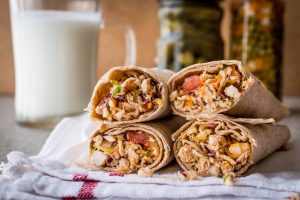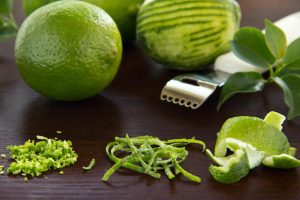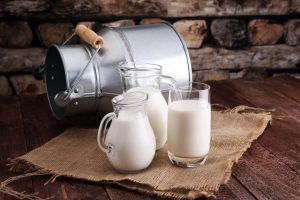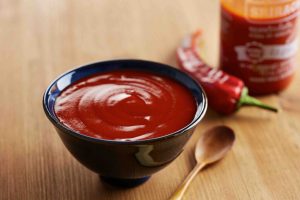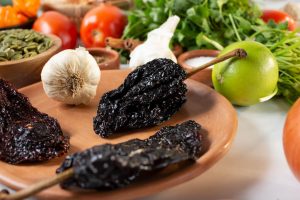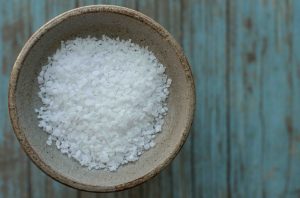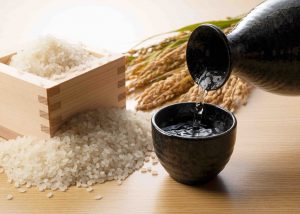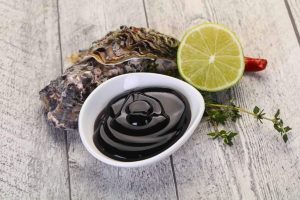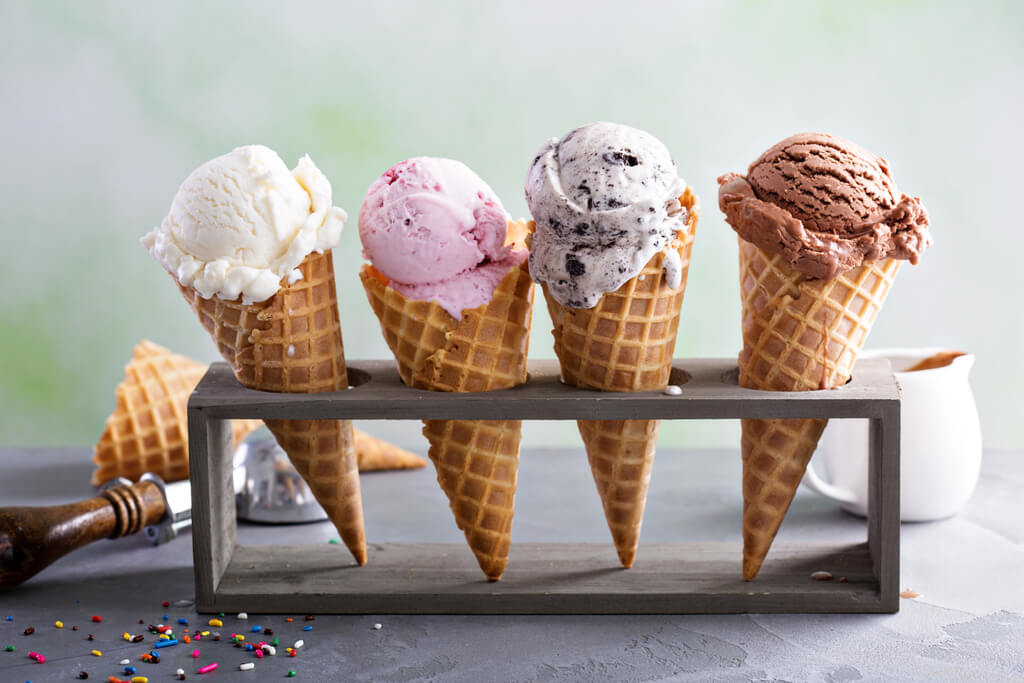
With the summer scorching hot, we can all agree that a visit to the water park and indulging in delectable icy treats are the perfect way to refresh. Nothing tops snow cones, sherbet, gelato, ice cream, and frozen custard on a hot day! While these icy treats all serve the same purpose, they actually have more differences than you might think. Yes, there is a difference between gelato vs ice cream and custard vs ice cream. Since we tend to group them together, confusion about them can be inevitable.
Browse through this article to find out more about what sets ice cream vs custard apart, as well as some tips and tricks that could help you learn how how to make your cold desserts at home.
What Is Frozen Custard?

Custard (also known as frozen custard and French ice cream) is a cold dessert made of milk, cream, sweetener, and egg yolks. In the United States, as required by the Food and Drug Administration (FDA), a custard should contain at least 10 percent milkfat and 1.4 percent egg yolk solids. Anything lower than these numbers are as considered ice cream.
What Is Ice Cream?
This world-famous cold dessert is made with milk, cream, a kind of sweetener like sugar, and flavorings. Many of us enjoy this creamy delight as a dessert or snack which is why ice cream has become commonplace in our refrigerators. The massive popularity of ice cream has also created many other variations such as frozen yogurts, custards, and other non-dairy sorts. The non-dairy version uses whole milk substitute options such as almond milk and soy milk which still works just fine for ice cream!
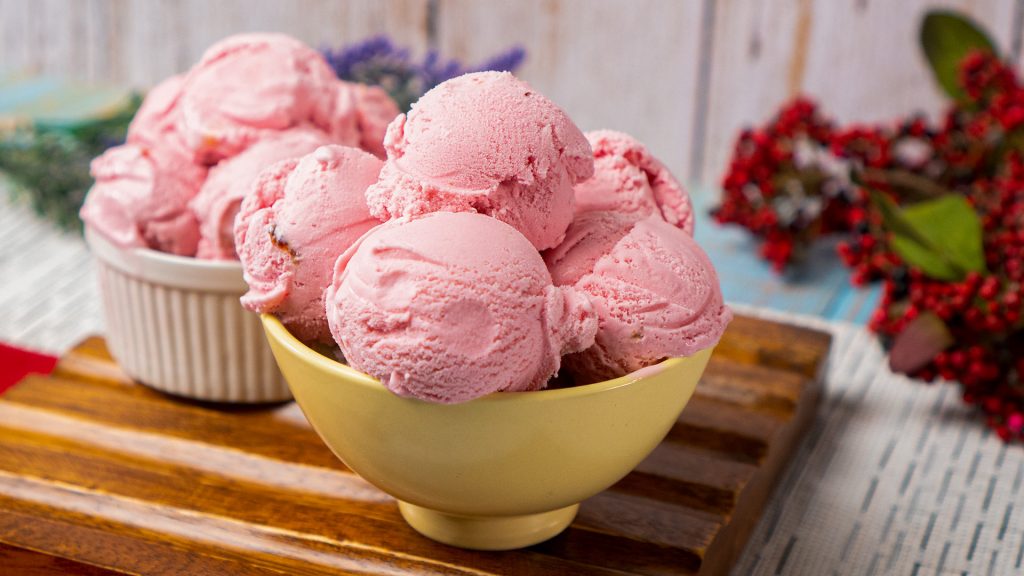
Dairy or non-dairy, ice cream has a rich yet light and fluffy mouthfeel — the result of churning that creates pockets of air into the mixture and produces the foam-like creamy texture of ice cream. In the United States, standards and regulations require ice creams to contain between 10 to 16 percent milkfat. If you want smoother and creamier ice cream, we recommend using milk with higher milkfat.
Ice cream owes its global popularity for many reasons: you can add lots of toppings, it’s a refreshing treat you can enjoy in any season, and there are many flavors to choose from. There are over currently 1,000 flavors (and counting) all over the world! The popular ones are chocolate, vanilla, and strawberry — the three flavors you’ll find in a banana split sundae and Neapolitan.
- According to statistical data, Wisconsin is the state that eats the most ice cream.
Frozen Custard vs Ice Cream: Is There a Difference?
Is there a difference between frozen custard and ice cream? Yes! They may look identical but they are far from being the same. The difference between custard and ice cream boils down to one ingredient: egg yolks.
The egg yolks in custard are what make custards creamier and richer than ice creams. Of course, some ice cream recipes also contain eggs. But unlike custards, ice creams contain less than 1.4 percent of egg yolk solids. On the other hand, custards contain more than 1.4 percent of egg yolk solids.
The use of egg yolk in custards also makes it thicker and tenser in texture which makes it more stable at room temperatures. In other words, custards do not melt as easily as ice creams. So if you are looking for an icy treat that can better withstand the summer heat, frozen custard is a good choice.
Another prominent difference is the assortment of flavors. Ice cream has over 1,000 flavors while custard has limited options. While we cannot confirm the actual reason, we hazard that it might be because locals lean to more traditional flavors (vanilla and strawberry) when creating frozen custards. But you can still enjoy flavors such as chocolate, coffee, and fruit. Both desserts can be served in cups and cones. And they’re also often added to floats and milkshakes. If you are up for the challenge, try using custard to make this delectable copycat In-N-Out chocolate milkshake.
How to Make Frozen Custard (Vanilla)
Besides ice cream, frozen custard is another treat you can make to refresh during the summer. However, pre-packaged custards have preservatives and way more sugar than you might like.
Making your frozen custard at home is totally doable, rewarding, and definitely less pricey. It’s also a fun activity for your kids during the hottest season of the year! To make this frozen dessert, you’ll need an ice cream maker or a hand-held mixer if you don’t have it.
Here’s a list of ingredients you need:
- 4 cups milk
- 1 1/4 cups sugar
- 1/3 cup cornstarch
- 1/8 tsp salt
- 4 eggs
- 1 can or 14 oz sweetened condensed milk
- 2 tbsp vanilla extract.
Directions:
- Pour milk into a saucepan and heat milk to 175 degrees F. Heat until little bubbles start to form.
- Turn off the heat and add sugar, cornstarch, and salt. Mix well until they are fully dissolved.
- Next, beat eggs in a separate bowl.
- Once beaten, temper the eggs. Do this by slowly adding a small amount of hot mixture into the eggs and mix. Repeat until the mixture is fully incorporated into the eggs.
- Return all to the saucepan and whisk constantly over low heat until the mixture reaches 160 degrees F. You’ll know it’s down when the mixture sticks and coats the back of your spoon.
- Turn off the heat and let it cool by submerging the pan in a bowl of ice water. Pour condensed milk and vanilla. Make sure it’s mixed well and the mixture is homogenous.
- Take it out of the ice water and press wax paper or a plastic wrap on the surface of the custard. Make sure the paper touches the surface to prevent it from forming a thin crust while refrigerating. Once frozen transfer in a freezer container and freeze for another 2 to 4 hours or overnight for best results.
How to Make Ice Cream (Vanilla)
The key to perfect ice cream is lots of churning. Churning your ice cream helps build air pockets and thicken the mixture, creating a soft and light mouthfeel texture. Your ice cream maker should help with that. Get it out of the cabinet and follow the easy steps below.
Ingredients:
- 2 ¼ cups milk
- 1 cup heavy cream
- ¾ cup white sugar
- 2 teaspoons vanilla extract
Directions:
- In a saucepan, combine sugar, cream, and milk over low heat. Stir until sugar is well dissolved. Turn off the heat once a small ring of foam and bubbles appear on the edge of the pot.
- Transfer the milk-cream mixture into a bowl. Pour vanilla extract and whisk thoroughly.
- Let it cool and freeze overnight. Once chilled, pour into the ice cream maker. Begin processing by following the instructions given by the manufacturer of your ice cream maker. Generally, it should take 20 to 25 minutes.
- After churning, transfer to a freezer container and freeze for about 2 to 3 hours. You can also serve it immediately.
Frequently Asked Questions (FAQs)
Is custard more unhealthy than ice cream?
No. On the contrary, ice cream is generally more unhealthy than frozen custard because it’s likely to have more calories and fat. To be exact, there are 207 calories and 11 grams of fat per 100 grams of vanilla ice cream. Meanwhile, there are only 122 calories and 4 grams of fat per 100 grams of frozen custard. It also has more proteins and calcium than ice cream because it has eggs.
Is custard good for weight loss?
Custard is a good source of protein and calcium because it contains milk and eggs. However, eggs also help you put on weight. It’s also high in fat and sugar which you don’t want if you’re keen on keeping losing some pounds.
Can diabetics eat custard ice cream?
Yes! Contrary to popular belief, diabetics can in fact eat desserts such as custards and ice creams every now and then. However, they do need to keep watch on calories, fat, and carbohydrates in the food they eat.



